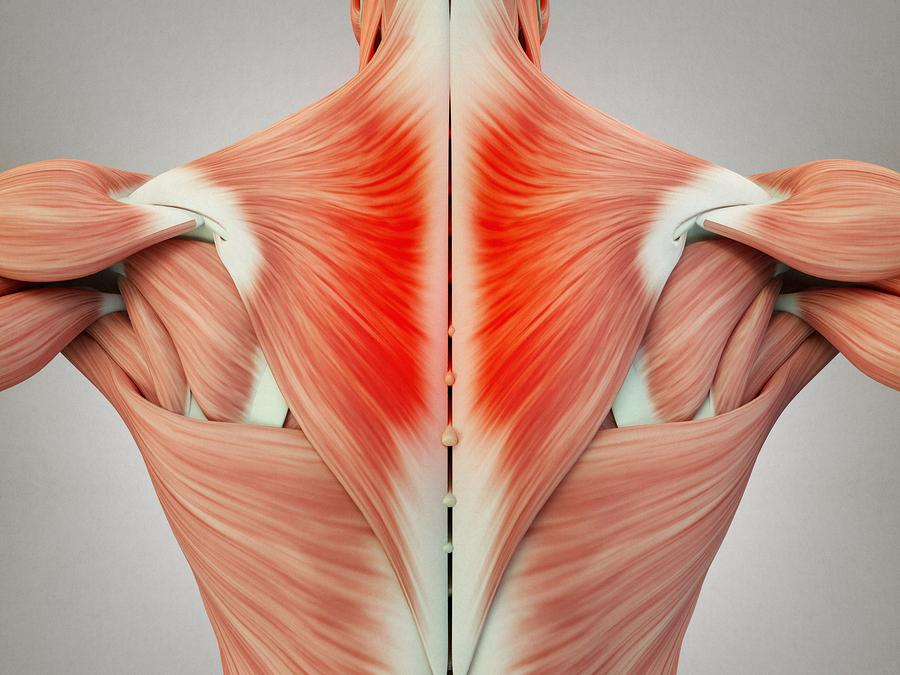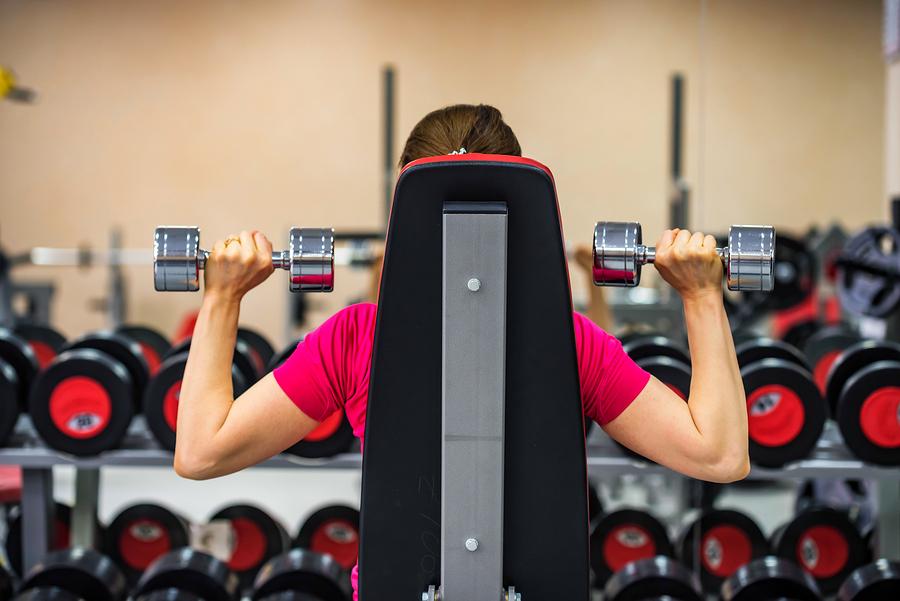In an article earlier on this year, we took a look at some common causes of shoulder pain, and what you can do to address these issues if you are experiencing them. Today we are going to take a closer anatomical look at the shoulder region, and learn more about this area of the body!
You may have heard the term ‘shoulder girdle’ in reference to the shoulders. The shoulder girdle actually refers to the clavicle and the scapula, whereas the shoulder itself is technically the socket formed by the head of the humerus and the cavity it is held in. This is known as the glenoid cavity.
For those of you who are unsure what these terms mean, let’s have a quick lesson! The scapula are the shoulder blades, whereas the clavicle is the collarbone. The humerus is the long bone that forms the upper part of the arm.
The shoulder girdle is supported by five very important muscles – the trapezius, the rhomboids, the levator scapulae, the serratus anterior, and the pectoralis minor.
Let’s take a closer look at these muscles to better understand how they support the function of the shoulder girdle.
Trapezius
This is one of the largest muscles in the back. It covers the majority of the upper back, as well as the back of the neck.
The trapezius helps with movement, rotation, and stabilisation of the shoulder blades, and also helps to enable movement of the head from the neck.
Rhomboids
The rhomboids are the combination of two muscles – rhomboid major and rhomboid minor. They are quite thin muscles and are located in the upper back between the shoulder blades. If you look closely then you can generally see these muscles in the back, even in untrained individuals.
The correct alignment and optimum strength of these muscles largely contributes to your posture, and they are also responsible for retraction movements of the shoulder blades.
Levator Scapulae
The levator scapulae muscle runs from the upper part of the shoulder blades up the neck to the first vertabrae.
This muscle helps to elevate the shoulder blades, as well as helping with lateral movement of the neck.
Serratus Anterior
This muscle can be found at the upper sides of the torso, and spreads down the first eight ribs.
Not only does the serratus anterior help to protect the shoulder blades, but it also assists with the upwards rotation of them.
Pectoralis Minor
Similarly positioned to the serratus anterior, the pectoralis minor can also be found at the upper sides of the torso. However, this muscle only spreads from the third to the fifth rib.
The pectoralis minor helps to protract and downwardly rotate the shoulder blades, as well as to elevate the rib cage during breathing.
Moving onto the shoulder joint, there are four important muscles that support the function of this area – the deltoid muscle, the pectoralis major, the latissimus dorsi, and the teres major.
Deltoid
The deltoid muscle is found at the very top of the arm and shoulder. It is quite similar in shape to a triangle.
This muscle assists in rotation and flexion of the arm, which is something that is especially necessary in many sports that involve throwing and catching. The deltoid muscle also helps to move and stabilise the shoulder joint.
Pectoralis Major
This is the thick muscle that covers the chest area. This is the largest and the most superficial of the two chest muscles.
The pectoralis major muscle helps to flex, extend, and rotate the arms. When this muscle is trained, it gives the chest a defined and prominent appearance.
Latissimus Dorsi
This is one of the largest muscles in the human body and is also often simply referred to as the lat. Although it is quite large, it is also relatively thin. It is not generally used very much in everyday activities. However, it does come into use in several exercises, and is therefore a muscle that physically active people generally seek to strengthen.
The majority of the functions of the latissimus dorsi muscle are connected to the movement of the arms. In addition, it also helps to depress the shoulder girdle.
Teres Major
This thick muscle is located in the upper part of the arms.
The teres major is largely responsible for the swinging motion of the arms. It also helps with the movement of the shoulder joint.
Supporting Shoulder Function
Taking care of the many muscles that support the shoulder region of the body is essential if you are to maintain optimum function in this area. In next week’s article we are going to look at some fantastic exercises for targeting these muscles! Making the effort to include these exercises in your routine regularly will go a long way to helping increase strength and stability in this area, which makes everyday function easier and safer!
References
1) http://www.teachpe.com/anatomy/index.php
2) https://www.kenhub.com/en/library/anatomy/shoulder-girdle
Related Posts
Cigarettes May Inhibit Inflammation Treatments
Axial spondyloarthritis, also known as AxSpa, is a chronic…









